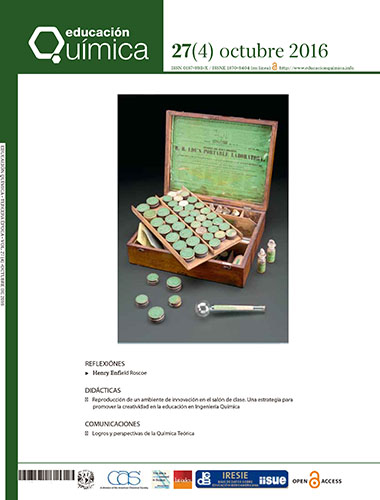Modified Newman projections: A new representation of the Newman notations to convey conformational properties
Contenido principal del artículo
Resumen
Conformational analysis is one of the significant subjects in the organic chemistry curriculum. Since this subject may be intricate for some beginner students, a concrete model (an activity) has been devised to explain the conformational concepts with an intriguing and simple method. This model is based on geometric shapes (particularly triangles) in which the revolution of each shape on its axis at the centroid (around its vertices and edges) simulates the rotation about a single bond in a molecule. If we take edges as lower energy (more stable) and vertices as higher energy (less stable), this revolution gives a graph almost identical to the actual conformational energy diagram of that molecule. These shapes can also incorporate into the Newman projections to form a tangible representation of these notations. Most of the participants, who got familiar with these newly modified Newman projections, found them beneficial in enhancing the students’ perception of the basic conformational properties of the molecules. Furthermore, searching for a relevant shape to match the right molecule serves as an activity that in addition to being enjoyable can encourage the students to get engaged with the topic. This model is applicable to a large variety of molecules such as the hydrocarbon, aldehyde and ketone molecules, which can also generalize to more functional groups and compounds.
Detalles del artículo

Educación Química por Universidad Nacional Autónoma de México se distribuye bajo una Licencia Creative Commons Atribución-NoComercial-SinDerivar 4.0 Internacional.
Basada en una obra en http://www.revistas.unam.mx/index.php/req.
